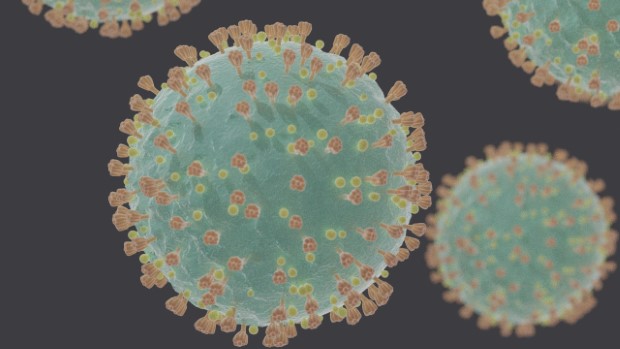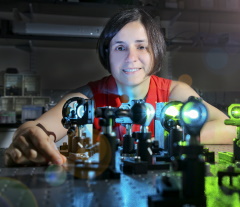Brandeis researchers tackle COVID-19
Virologist Tijana Ivanovic's lab is looking at how the virus infects cells. Computer scientists Pengyu Hong and Hongfu Liu are using machine learning to map its genetic code.

With the coronavirus raging across the country, Brandeis scientists are not sitting idle. They are scaling back their current research projects and bringing their unique approaches and insights to the fight against the pandemic.
Putting COVID-19 under the microscope
A virologist by training, assistant professor of biochemistry Tijana Ivanovic has long studied such deadly pathogens as influenza and Ebola.
Now, she and her lab are turning their attention to COVID-19.
In partnership with Boston University's National Emerging Infectious Diseases Laboratories (NEIDL), she's using an approach her lab pioneered to study how the virus penetrates a cell's membrane.

Tijana Ivanovic
She’s also looking at how antibodies produced in response to COVID-19 by the immune system work to inhibit membrane penetration by the virus.
Ivanovic hopes a greater understanding of how the virus wreaks havoc in the body can lead to new treatments.
Brandeis does not have government approval to research live COVID-19 viruses. But NEIDL does and will provide Ivanovic and her team with therapeutic antibodies and the information they need to synthesize non-infectious virus-like particles.
Ivanovic's lab will then use a technique called total internal reflection fluorescence (TIRF) microscopy to observe the virus-like particles in action.
TIRF enables investigators to see an incredibly thin region, typically less than 200 nanometers, of a specimen. That means Ivanovic and her team will be able to observe individual COVID-19-like particles in real-time.
TIRF has been around for several decades but Ivanovic's lab is unique in being able both to synthesize virus-like particles and then adapt TIRF to study their behavior.
Ivanovic and her colleagues plan to investigate two aspects of the COVID-19:
- How it penetrates a cell membrane so it can deliver a snippet of genetic material called RNA and begin replicating.
- How the antibodies are naturally produced in the body in response to the presence of the virus. Ivanovic and her lab hope to gain a better understanding of why the antibodies are either effective or ineffective in combating the virus.
Cracking the genetic code
Two Brandeis computer scientists are using machine learning and artificial intelligence to analyze the genomes of COVID-19, other relevant corona- and avian-influenza viruses and Ebola.

Hongfu Liu
Professor of computer science Pengyu Hong and assistant professor of computer science Hongfu Liu want to identify the small and crucial bit of COVID-19's genetic code that may give rise to two of its most lethal and unique attributes:
- Its ability to survive to some extent in warmer weather and for a relatively long period of time on various kinds of surfaces outside of host bodies.
- Its long contagious incubation time (about 2 weeks) during which infected individuals show no or only mild symptoms.
Hong and Liu believe that these genetic features of COVID-19 may arise from short nucleotide segments of usually 4 to 21 bases. The genome of COVID-19 consists of 26,000 to 32,000 nucleotides.
But to find the nucleotide patterns that make COVID-19 unique, they need to compare its genome with that of other infectious viruses such as SARS-Cov, Ebola and influenza viruses. Some of those have genomes that consist of nearly two million nucleotides.
This is where machine learning comes in. The advanced machine learning and artificial intelligence techniques the scientists are using can help sift through massive amounts of data to learn which nucleotide patterns are shared and which might be specific to COVID-19.
According to Hong and Liu, artificial intelligence may also be able to predict emerging variations in the genomes of future viruses.
Potentially, this could allow scientists to identify lethal viruses much earlier than at present, or even devise treatments and design public health responses in anticipation of a virus' emergence.
Categories: General, Research, Science and Technology





